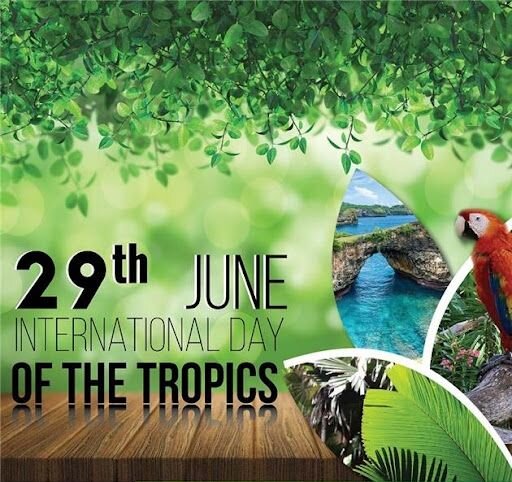Protecting tropical ecosystem ‘more important than ever’

TEHRAN – With studies suggesting that half the world’s population will call the tropics home by 2050, it’s more important than ever to protect these unique and fragile ecosystems.
Celebrated annually on June 29, the International Day of the Tropics offers a unique perspective on the tropical regions’ extraordinary cultures, biomes, and ecosystems while shedding light on challenges faced by tropical areas.
The day aims to celebrate the extraordinary diversity of tropical regions. Also, it draws attention to the challenges facing the people of these regions.
The Tropics are a region of the Earth, roughly defined as the area between the tropic of Cancer and the tropic of Capricorn.
Accounting for 40 percent of both the world’s total surface area and population, the tropical region surrounds the equator, covering continents from Northern Australia to central Africa and South America.
Although topography and other factors contribute to climatic variation, tropical locations are typically warm and experience little seasonal change in day-to-day temperature.
An important feature of the Tropics is the prevalence of rain in the moist inner regions near the equator, and that the seasonality of rainfall increases with the distance from the equator
The tropics are home to around 80 percent of the world’s biodiversity.
According to the United Nations (UN), the Tropics host around 99 percent of mangrove species and nearly 95 percent of the world’s mangrove forests by area.
Mangrove forests are rich ecosystems that support the planet and humanity in unique ways by providing conditions for fish growth, storing carbon, and fighting floods.
They are able to store about 6 to 8 tons of carbon per hectare of soil per year.
They contribute to the creation of a complete ecosystem. Above water, mangrove trees provide a habitat for birds while amphibians and small fish live on their roots.
Mangroves provide natural infrastructure and protection to the populated areas nearby as the areas prevent erosion and absorb the impacts of storm surges during extreme weather.
The complex mangrove root systems will help filter phosphates, nitrates, and other pollutants from the water, resulting in a more improved water quality.
Moreover, mangroves play a crucial role in preserving the beach soil and protecting it from erosion. Turtles, crustaceans such as shrimps and crabs, as well as fish take shelter in it to lay their eggs.
In addition, the tree is an important feeding ground for living creatures, providing wood for construction. Mangrove trees also play a vital role in maintaining the ecological balance of the sea coast.
The mangrove tree is a nurturing habitat for every seabird and every aquatic creature in tropical coastal areas. Moreover, animals such as camels and sheep rely on the leaves of the tree as a food source when there is no pasture in the desert.
One of the unique habitats of mangroves is located in Iran. There are 107 species of mangroves, two of which grow in the country, called Hara and Chandel. Mangrove forests in Iran mostly consist of the Avicenna marina, known as Hara, named after the 11th-century great Iranian scientist Avicenna or Abu-Ali-Sina. In Iran, the Hara forest area covers more than 27 thousand hectares.
The forests spread from Nayband Bay in the southwestern Bushehr province to Govater Bay in the southeastern Sistan-Baluchestan province on the coast of the Sea of Oman.
More than 90 percent of these forests, both in terms of quality and quantity, are located in the southern Hormozgan province, such as Khamir Port and Qeshm Island, although there is a part in the Khor Azini site, in Sirik county in Hormozgan, which hosts rhizophora mucronata species, Chandel.
Unfortunately, with modernization and industrialization driven by population growth in recent decades, the tropical region is facing several challenges, such as climate change, deforestation, logging, urbanization, and demographic changes.
International Day of Tropics provides an opportunity to take stock of progress across the tropics, to share tropical stories and expertise, and to acknowledge the diversity and potential of the region.
It also underlines the important role that countries in the tropics will play in achieving the sustainable development goals.
MT/MG
Leave a Comment